The history of Srivijaya was born at the beginning of the 20th century AD, when George Coedes wrote his essay titled Le Royaume de Crivijaya in 1918 AD Actually, five years before that, in 1913 AD, Kern had published the Cretaceous City Inscription, a legacy inscription Sriwijaya found in Bangka Island. However, at that time, Kern still considered the name of Sriwijaya listed on the inscription as the name of a king, because Cri is usually used as a title or title of king.
In 1896 AD, Japanese scholar Takakusu translated I-tsing, Nan-hai-chi-kuei-nai fa-ch'uan into English with the title A Record of the Buddhist Religion as Practiced in India and the Malay Archipelago. However, in the book there is no Srivijaya name, only Shih-li-fo-shih. From the translation of the Cretaceous City inscription containing the name of Sriwijaya and I-Tsing's work containing the name Shih-li-fo-shih, Coedes then stipulates that, Sriwijaya is the name of a kingdom in South Sumatra.
Furthermore, Coedes also stipulates that the location of the capital of Sriwijaya is Palembang, based on the notion of Groeneveldt in his essay, Notes on the Malay Archipelago and Malacca, Compiled from Chinese Source, which states that, San-fo-ts'I is Palembang. Another source, Beal, expressed his opinion in 1886 that, Shih-li-fo-shih is an area located on the banks of the Musi River, near the city of Palembang now. From this opinion, then emerged a tendency among historians to consider Palembang as the center of the Srivijaya Kingdom.
Another source that supports the existence of Palembang as the center of the kingdom is Telaga Batu inscription. This inscription is a stone-shaped plates approaching the pentagon, on top of it there are seven heads of cobra, with a small bowl with a spout (small mouth where out of water) underneath. According to archaeologists, this inscription is used for the execution of ceremonies of allegiance loyalty and obedience of candidates. In the procession, the sworn official drank the water flowed to the rock and exited through the spout. As a means of ritual ceremonies, such inscriptions are usually placed at the center of the kingdom. Because it was found around Palembang in 1918M, it is strongly suspected Palembang is the center of the Sriwijaya Kingdom.
Another clue which states that Palembang is the center of the kingdom is also obtained from the findings of ceramic and pottery items at Talang Kikim site, Tanjung Rawa, Bukit Siguntang and Kambang Unglen, all in Palembang. Ceramics and pottery is a tool used in everyday life. These findings indicate that, in the olden days, in Palembang there were ancient settlements. This allegation is stronger with the interpretation of aerial photographs in the western area of Palembang City, which describes the forms of ponds and canals. Regularly shaped pools and canals are most likely man-made, not the result of natural processes. From the findings of ceramics and these canals, the archaeologists suspect that Palembang is the center of the empire is getting stronger.
As the center of the kingdom, the condition of Palembang when it is rural, unlike other royal centers found in the Southeast Asian mainland, such as in Thailand, Cambodia, and Myanmar. The main ingredients used to build buildings in the center of Sriwijaya city are wood or bamboo that is easily found in the vicinity. Because the material is easily destroyed by the times, there is no remaining building that can be found again. Even if there is, the rest of the settlements with wooden construction can only be found in swampy areas or riverside watercourses, not in the city center, such as on Ujung Plancu site, Batanghari District, Jambi. Indeed there are buildings made of brick or stone, but only sacred (religious) buildings, such as those found in Palembang, on the site of Gedingsuro, Angsoka Temple, and Siguntang Hill, made of brick. Unfortunately, the rest of the found buildings are only part of the foundation only.
In Talang Tuo inscription dated 684 AD, it is mentioned about the development of the garden by Dapunta Hyang Sri Jayanasa for all creatures, named Sriksetra. In the park, there are trees whose fruit can be eaten. The data is more complete with the Chinese and Arabic news. The most frequently cited Chinese source is the I-tsing note.
He is a Buddhist pilgrim from China who has visited Sriwijaya several times and has lived for some time. The first I-sting visit was 671 AD. In his note it was mentioned that there were more than a thousand Buddhist monks in Sriwijaya. The rules and ceremonies of Buddhist monks are similar to the rules and ceremonies performed by Buddhist monks in India. I-tsing stayed for six months in Sriwijaya to study Sanskrit, after which, he just left for Nalanda, India. After a long study at Nalanda, I-tsing returned to Sriwijaya in 685 and lived for several years to translate Buddhist texts from Sanskrit into Chinese. Another Chinese record mentions the Sriwijaya envoy who came regularly to China, the last of which was 988 AD
In another source, the Arabic record, Srivijaya is called Sribuza. Mas'udi, a classical Arab historian, wrote the account of Srivijaya in 955 AD In that account, depicted by Sriwijaya as a great empire, with a very large army. The products of Sriwijaya are camphor, gaharu wood, cloves, sandalwood, nutmeg, kardamunggu, gambier and some other crops.
From these foreign records, it can be seen that Sriwijaya was a great empire of its time, with its vast territory and trade relations up to Madagascar. Some other evidence of statues, stupika, and other inscriptions further emphasize that, at the time of Sriwijaya is a kingdom that has good communication with the merchants and priests in China, India and Arabia. This can only be done by a large, influential, and calculated kingdom in its region.
#POLITICAL LIFE
The political life of the Sriwijaya kingdom can be seen from the ruling kings, the territories of power, and their relations with foreign parties.
One way to expand the influence of the kingdom is by marrying with another kingdom. This is also done by the ruler of Srivijaya. Dapunta Hyang, who ruled since 664 AD, married Sobakancana, the daughter of the two kings of Tarumanegara Kingdom, Linggawarman. This marriage gave birth to a son who became the next king of Srivijaya: Dharma Setu. Dharma Setu then has a daughter named Dewi Tara. This princess then he married with Samaratungga, the king of the Ancient Mataram Kingdom of the Syailendra Dynasty. From the marriage of Goddess Setu with Samaratungga, then born Bala Putra Dewa who became king in Srivijaya from 833 until 856 M. Here is a list of the lineage of Sriwijaya king:
Dapunta Hyang Sri Jayanasa (Inscription Kedukan Bukit 683, Talang Tuo, 684).
- Cri Indrawarman (Chinese news, 724).
- Rudrawikrama (Chinese news, 728, 742).
- Vishnu (inscription Ligor, 775).
- Maharaja (Arabic news, 851).
- Balaputradewa (Nalanda inscription, 860).
- Cri Udayadityawarman (Chinese news, 960).
- Cri Udayaditya (Chinese news, year 962).
- Cri Cudamaniwarmadewa (Chinese news, year 1003, Leiden inscription, 1044).
- Maraviyayatunggawarman (Leiden inscription, 1044).
- Cri Sanggaramawijayatunggawarman (Chola inscription, 1044).
#POWER REGION
After successfully controlling Palembang, the capital of Sriwijaya Kingdom was moved from Muara Takus to Palembang. From Palembang, the Kingdom of Sriwijaya can easily control the surrounding areas such as Bangka Island located on the international trade street meeting, Jambi Hulu located on the bank of Batanghari River and possibly West Java (Tarumanegara). So in the seventh century AD, the kingdom of Sriwijaya had mastered the keys of important trade routes such as the Sunda Strait, Bangka Strait, Malacca Strait and the western Java Sea. In the 8th century AD, the expansion of the Srivijaya Kingdom was aimed northward, occupying the Malayan Peninsula and the Kra. The occupation of the Malay Peninsula region has the goal of dominating the pepper and tin producing regions. While occupation in the area of Genting Kra has a goal to master cross-trade routes between China and India. The Isthmus of Kra is often used by merchants to cross from the waters of the Indian Ocean to the South China Sea, to avoid a stopover at the center of the Srivijaya Kingdom. Other areas of Sriwijaya power include Bone-Onions located in Lampung and Kedah areas located on the west coast of the Malay Peninsula to develop a business of trade with India. In addition, also known by the news from China, Sriwijaya displace the kingdom of Kaling in order to be able to control the north coast of Java because it is an important trade route.
At the end of the 8th century CE, the kingdom of Sriwijaya had mastered all trade routes in Southeast Asia, both through the Strait of Malacca, the Karimata Strait, and the Kra. With the territory's power, the Sriwijaya Kingdom became the largest maritime kingdom throughout Southeast Asia.
#RELATIONSHIP WITH OVERSEAS
The kingdom of Sriwijaya established good relations with the kingdoms outside Indonesia, especially with the kingdoms residing in India, such as the Pala Nalanda Kingdom in Bengal. King Nalanda, Dewapala Dewa presented a plot of land for dormitory construction for students from the archipelago who wanted to become 'dharma' financed by Balaputradewa.
Social Life of Sriwijaya Kingdom Due to its strategic location, the development of international trade in Sriwijaya is very good. With the many traders who stop in Sriwijaya enables the community to communicate with them, so as to develop the ability to communicate Sriwijaya community. The possibility of Old Malay has been used as a medium of instruction especially with traders from West Java, Bangka, Jambi and Peninsular Malaysia. This international trade also makes the public tendency to be open to a variety of foreign influences and cultures, one of them is India. Indian culture that enters the use of typical Indian names, customs, and also Hindu-Buddhist religion. I-tsing explained that many priests came to Sriwijaya to study Sanskrit and copied Buddhist scriptures. The most famous great teacher of the masses was Sakyakirti who authored the book Hastadandasastra.
#ECONOMIC LIFE
In the beginning, the economic life of Sriwijaya society was based on agriculture. However, due to its strategic location, namely at the intersection of international trade routes, making crops become the main capital to start trading and shipping activities. Because of its strategic location, Chinese merchants going to India are bongkarmuat in Sriwijaya, and so are Indian traders going to China. Thus Sriwijaya harbor increasingly crowded until Sriwijaya became the center of commerce in Southeast Asia. The waters of the Natuna Sea, the Malacca Strait, the Sunda Strait, and the Java Sea are under the control of Srivijaya. The kingdom of Sriwijaya has excellent trade relations with merchants from China, India, Arabia and Madagascar. This can be ascertained by the invention of the Chinese currency, from the Song Dynasty period (960-1279 AD) to the Ming Dynasty (14-17 CE). In relation to commodities traded, Arabic news from Ibn al-Fakih (902 AD), Abu Zayd (916 AD) and Mas'udi (955 AD) mentions some of them, namely cloves, nutmeg, cardamom, pepper, areca nut, eaglewood , sandalwood, camphor, ivory, tin, gold, silver, ebony, sapwood, spices, and turtles. These items are bought by foreign merchants, or bartered with porcelain, cotton and silk fabrics.
#RELIGIOUS LIFE
Sriwijaya Kingdom The religious life of the Sriwijaya community is influenced by the arrival of Indian traders. First is Hinduism, then Buddhism. Buddhism was introduced in Srivijaya in AD 425. I Tsing reported that Sriwijaya became the home of Buddhist scholars to become a center of Buddhist learning, especially the Mahayana school. In addition Buddhism of the Hinayana Buddhist school also grew in Sriwijaya. The name of Dharmapala and Sakyakirti is no stranger anymore. Dharmapala is a professor of Buddhism from the Kingdom of Srivijaya. He once taught Buddhism at Nalanda College (Bengal). While Sakyakirti is a great teacher as well. He authored the book Hastadandasastra. It is quite possible that the renowned Sriwijaya as a trading center of commerce in Southeast Asia, certainly attracts Muslim traders and Muslim clerics from the Middle East. So that some of the kingdom that was originally part of Srivijaya, then grow into the forerunner of the Islamic kingdoms in Sumatra later, while the weakening of the influence of Srivijaya.
#THE KINGDOM OF KINGDOM OF SRIWIJAYA KINGDOM
In the first half of the 10th century among the fall of the Tang dynasty and the rise of the Song dynasty trade abroad was quite rampant especially the Fujian Empire Min and the rich country of Guangdong Nan Han kingdom. No doubt Sriwijaya benefit from this trade. In 903 the Muslim writer Ibn Battuta was deeply impressed by the prosperity of Srivijaya. The urban areas of the kingdom include Palembang (Bukit Seguntang only) Muara Jambi and Kedah. In 902 Sriwijaya sent tribute to China. Two years later the last king of the Tang dynasty bestowed the title on the Srivijaya envoy. From the Chinese literature the messenger has an Arabic name it gives information that in those days Sriwijaya had contact with Arabs which enabled Sriwijaya to have entered the influence of Islam in the kingdom.
#SRIWIJAYA KERULJAAN CROSS
Rajendra Coladewa in 1025 King Chola of the South Indian Corpsanders conquered Kedah and seized it from Srivijaya. Then the Chola Kingdom continued the siege and succeeded in the conquest of Srivijaya for decades following the entire Sriwijaya empire in Rajendra Coladewa's influence. Nevertheless, Rajendra Coladewa still gives chance to the conquered kings to remain in power while remaining subject to him. After the final invasion resulted in the weakening of the hegemony of Sriwijaya and subsequently several subordinate regions formed their own kingdom and later emerged the Dharmasraya Kingdom as a new power and then annexed the Malay peninsula and Sumatra region including Sriwijaya itself.
SRIWIJAYA KINGDOM LEARNING
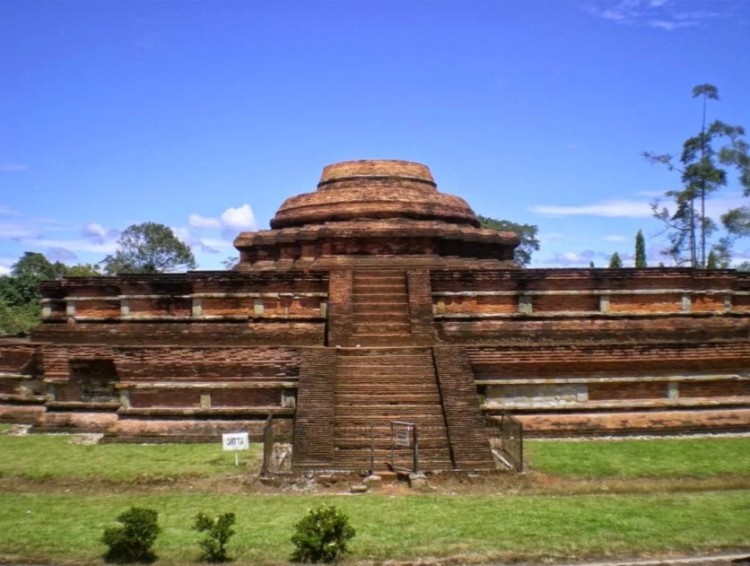
The kingdom of Sriwijaya stands on the island of Sumatra with its territories covering it from Cambodia, southern Thailand, Malaya Peninsula, Sumatra, and parts of Java.
There are some relics of this Sriwijaya Kingdom that is one of them is an inscription. The following are the 9 inscriptions that became the relics of the Sriwijaya Kingdom.
. Ligor Prasarti

Ligor inscriptions are found in Nakhon Si Thammarat, Southern Thailand. The sculpture was written on both sides. The first side is called ligor A inscription, its contents describe the valor of King Sriwijaya, king of all kings of the world who have established Trisamaya caitya for Kajara.
The second side is called the inscription Ligor B, its contents explain about the degree of Visnu Sesawarimadawimathana to Sri Maharaja who came from the family Sailendravamsa.
. Inscription Palas Pasemah
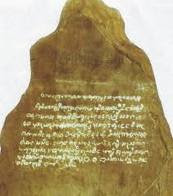
Pasas Palas Inscription is an inscription found in a swampy suburb in the village of Palas Pasemah, South Lampung. This inscription is written in Ancient Malay language Pallawa is made up of 13 lines of sentences.
The contents of the Inscription Ligor explain about the curse of those who are not subject to the power of Srivijaya. Estimated from the form aksaranya, one of Sriwijaya royal inscription is estimated to originate from the 7th century AD.
.Leiden inscription
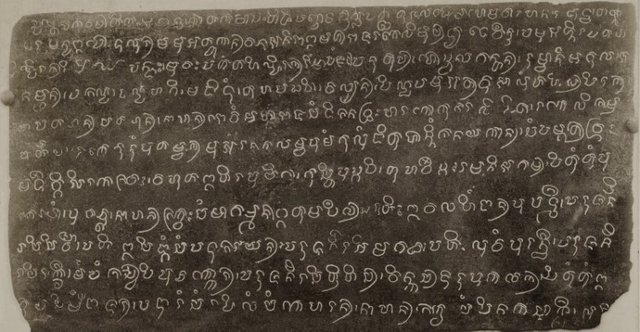
The Leiden inscription is written on a copper plate in Sanskrit and Tamil. Currently Leiden Inscription is in the Dutch Museum.
It tells of the good relationship between the Cholas from Tamil and the Sailendra dynasty from Srivijaya, South India.
. Kapur City Inscription

The Cretaceous City inscription is found on the western coast of Bangka Island. The inscription written in Ancient Malay language Pallawa was found in December 1892 by J.K. van der Meulen.
The contents of the Cretaceous City Inscription describes the curse for anyone who refutes the decree of the Sriwijaya empire.
. Kedukan Bukit inscription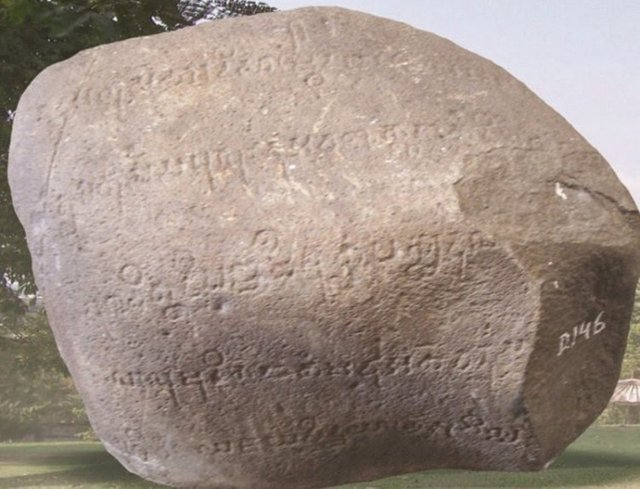
Batenburg found a stone inscribed in Kampung Kedukan Bukit, Kelurahan 35 Ilir On November 29, 1920, M, Palembang. This inscription measuring 45 × 80 cm is written using Old Malay language and Pallawa script.
The contents of the inscription Kedukan Bukit tells about a messenger of Sriwijaya Kingdom named Dapunta Hyang has held sidhayarta (holy journey) using a boat.
The journey was accompanied by 2,000 troops, he has managed to conquer other areas. Sriwijaya royal heritage inscription is now stored in the National Museum of Indonesia.
. Hujung Langit Inscription
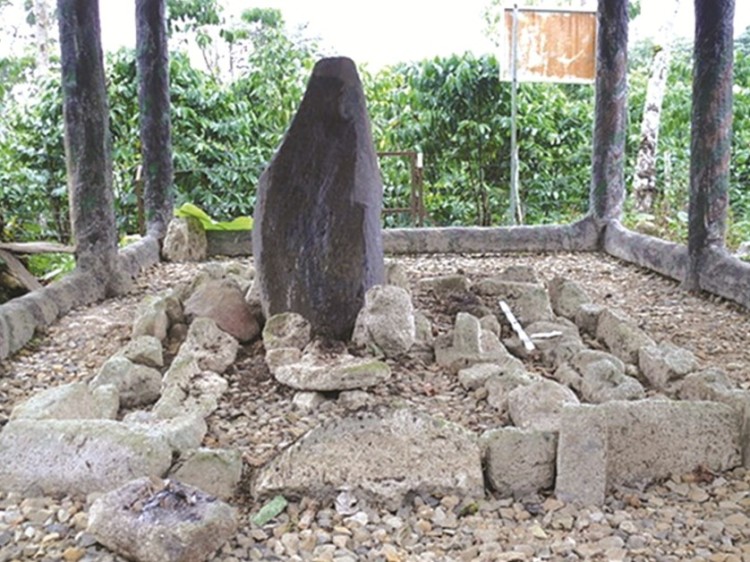
Hujung Langit inscription is inscription of relic of Sriwijaya kingdom found in village of Haur Kuning, Lampung.
Similar to other inscriptions, the Hujung Langit inscription is also written in Old Malay and Pallawa script.
The order of the messages in this inscription is not clear enough because the stone wear rate is very high. However, after the identification of this inscription is estimated to date from 997 AD and its contents explain about the granting of sima land
. Talang Tuo inscription
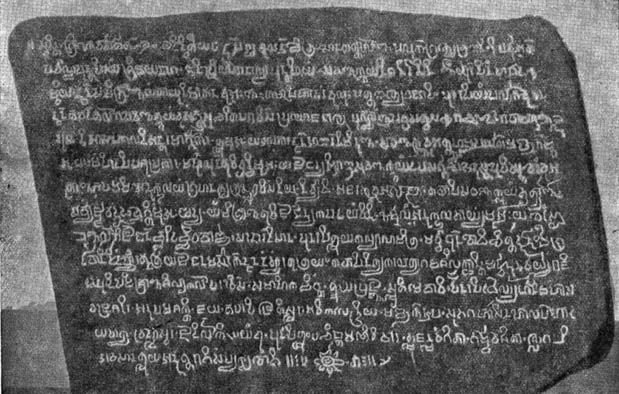
Louis Constant Westenenk who was a Palembang resident on 17 November 1920 found an inscription at the foot of Seguntang Hill on the northern bank of the Musi River.
Talang Tuwo Inscription is an inscription containing dedication prayers. This inscription illustrates that the flow of Buddhism used by Sriwijaya at that time was Mahayana.
This is evidenced by the use of typical Mahayana Buddhist words such as bodhicitta, vajrasarira, annuttarabhisamyaksamvodhi, and mahasattva.
. Inscription Lake Telaga
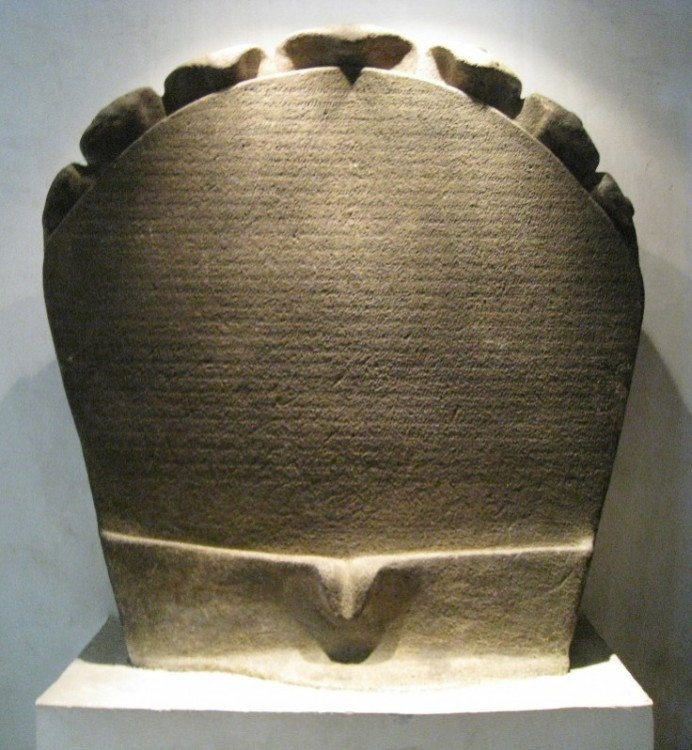
Inscription Telaga Batu is a collection of inscriptions found around pond Telaga Biru, Kelurahan 3 Ilir, Kec. Ilir Timur II, Palembang City.
These inscriptions contain the condemnation of those who committed evil in the unity of Srivijaya. Now, these inscriptions are kept at the National Museum, Jakarta.
. Inscription of Coral Birahi
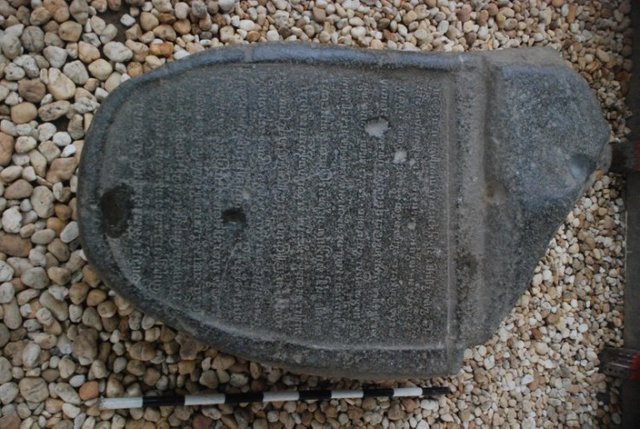
Figure who finds Controller L.M. Berkhout in 1904 at the edge of Batang Merangin Jambi. Same previously described the inscription Telaga Batu, Inscription Palas Pasemah, and Inscription City Lime, Inscription Karang Birahi tells about the curse on those who do evil and disloyal to the King of Srivijaya.
#Sriwijaya Kingdom, including History, Political Life, Territory of Power, Relations with Foreign Affairs, Economic Life, Religious Life, Glorious Times and Collapse of Sriwijaya Kingdom, and Heritage of Sriwijaya Kingdom